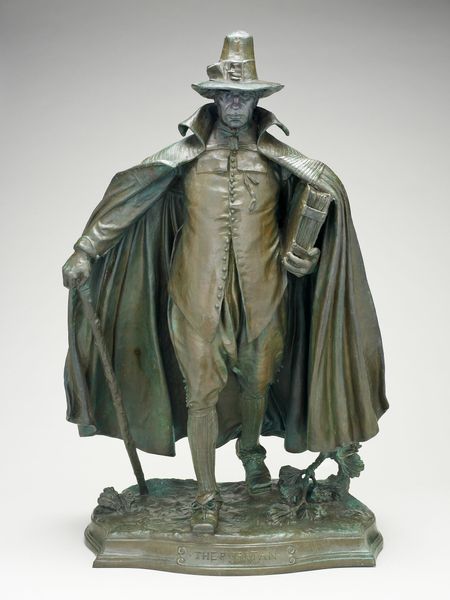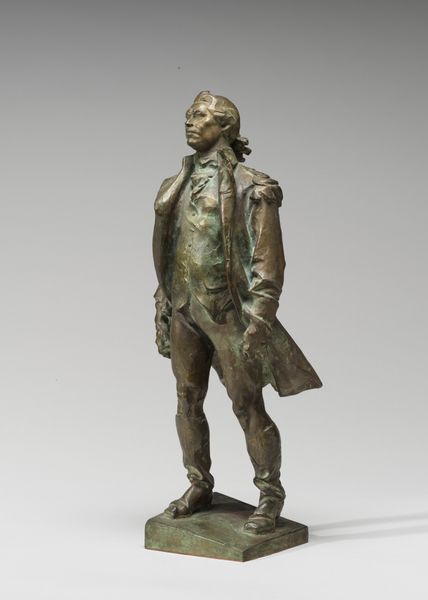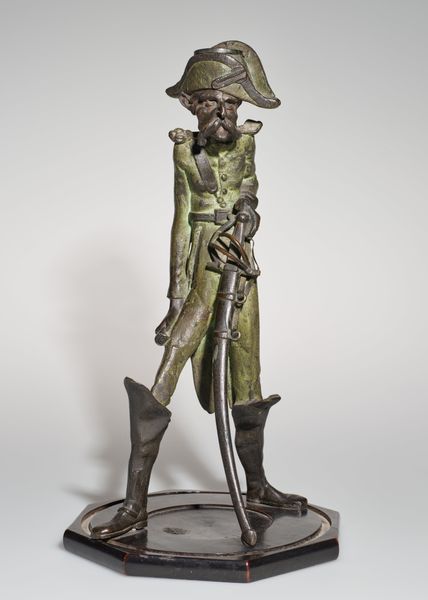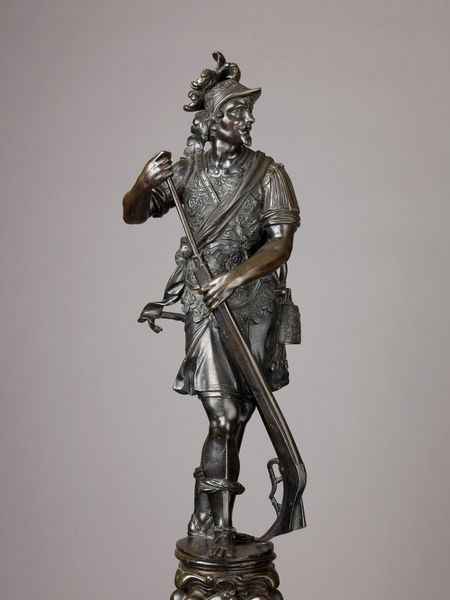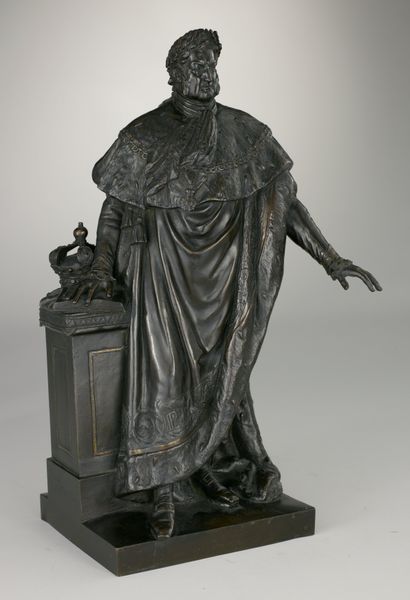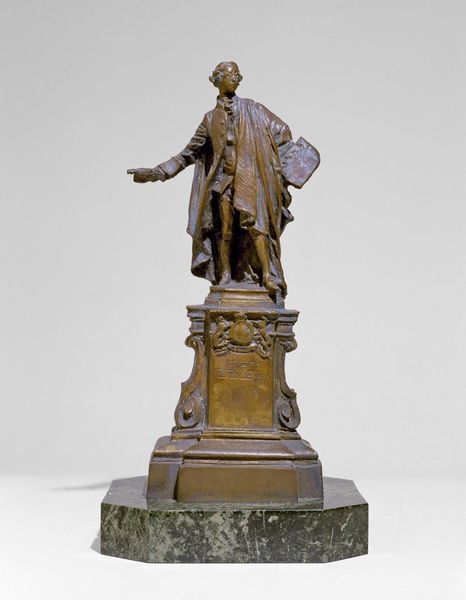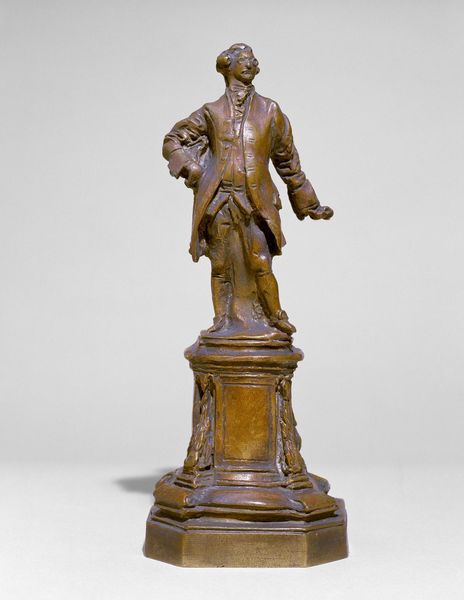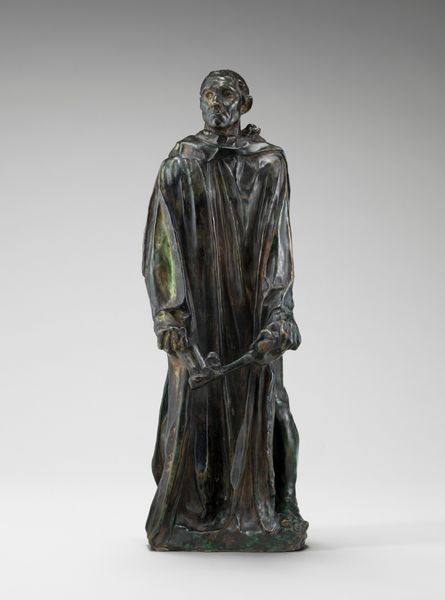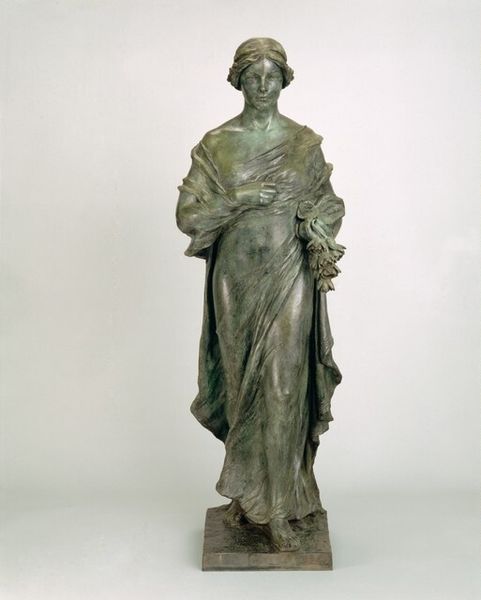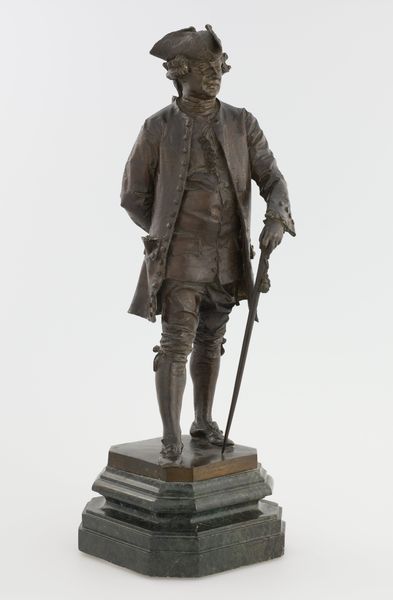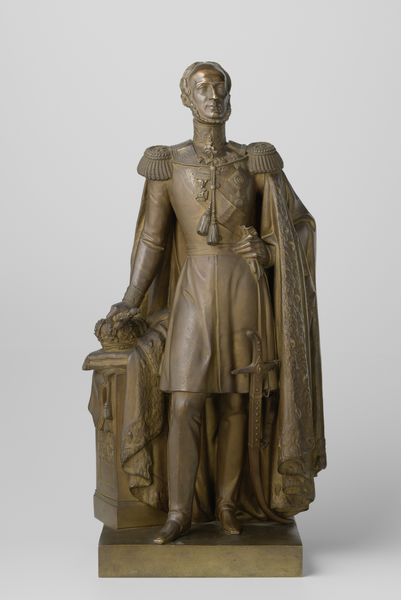
bronze, sculpture
#
portrait
#
16_19th-century
#
sculpture
#
bronze
#
sculpture
#
realism
Dimensions: 30 1/2 x 18 1/2 x 13 in. (77.5 x 47 x 33 cm)
Copyright: Public Domain
Editor: Here we have Augustus Saint-Gaudens' bronze sculpture "The Puritan", created between 1883 and 1899. There's a severity in his stance and expression, a kind of unwavering resolve. How do you interpret this work? Curator: The "Puritan," often viewed through a lens of American exceptionalism, needs to be re-examined through a critical, intersectional perspective. This figure embodies not just religious piety, but also a complex web of power dynamics, colonialism, and suppression of Indigenous populations. What does that determined stance truly represent when we consider its historical impact? Editor: I see your point. I guess I hadn't considered the larger implications. It makes me question whether that book he's holding is a symbol of knowledge or control. Curator: Exactly! Consider the historical context. The Puritans sought religious freedom, yet their actions led to the displacement and oppression of others. Think about how narratives get shaped and who benefits from these sculptures being celebrated uncritically. How can we use art to address this history more truthfully? Editor: That's a powerful challenge. I was so focused on the artistic technique and portraiture that I missed the uncomfortable historical context it represents. Curator: By engaging in dialogue between art and contemporary critical theory, we can encourage more critical conversations. This can expose historical traumas that art has often overlooked. Editor: I appreciate this new lens on Saint-Gaudens' work. It has definitely pushed me to look beyond the surface and consider the deeper implications of art and its historical narratives. Curator: Precisely. I hope the experience invites listeners to look critically at other supposedly “uncontroversial” pieces and begin asking similar questions.
Comments
No comments
Be the first to comment and join the conversation on the ultimate creative platform.
